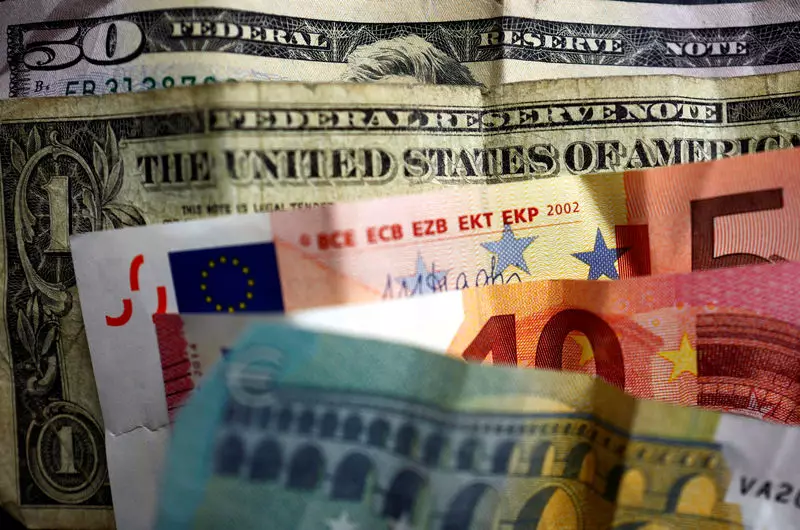The U.S. Dollar’s Subtle Decline Amid Labor Market Anticipation

In the ever-changing world of global finance, currency movements can reflect larger economic trends and sentiments. Recently, the U.S. dollar has exhibited a slight pullback, leading to a host of market speculations. As traders maneuver through the holiday-impacted waters with Labor Day celebrations hindering market activity, they are keenly focused on forthcoming labor market data that may trigger shifts in monetary policy by the Federal Reserve.
As of the latest updates, the Dollar Index, which gauges the performance of the dollar against a collection of six major currencies, has edged down by 0.1%, settling at 101.577. This minor decline follows a brief rally where the dollar peaked at 101.79, a range not witnessed since late August. The slowdown in trading volume is predominantly influenced by the U.S. holiday, which has left traders anticipating substantial labor reports scheduled for later in the week.
Historically, the dollar’s trajectory shows resilience, as it recently rebounded after a considerable slump of about 5% since July. An upcoming event, namely the U.S. jobs report due at the week’s end, is creating an atmosphere of expectation among economists and investors alike. The insights derived from these reports are deemed crucial, especially after commentary from Federal Reserve Chair Jerome Powell which hinted at a willingness to adjust interest rates in response to evolving job market conditions rather than a strict focus solely on combating inflation.
The impending payroll figures will be a litmus test for market sentiment. Forecasts suggest an increase of 164,000 jobs with an unemployment rate holding steady at 4.2%. Should these projections prove accurate, it could diminish the probability of a more substantial interest rate reduction by 50 basis points. Conversely, a robust jobs report could maintain the narrative surrounding a potential 25 basis point rate cut, reflecting sensitivities to labor market health.
Simultaneously, a series of other labor statistics are set to be released prior to the main jobs report, including Wednesday’s Job Openings and Labor Turnover Survey (JOLTS) and Thursday’s ADP weekly employment figures. These reports could collectively provide a more nuanced picture of the labor market and its health.
Global Currency Movements
Meanwhile, movements in the forex markets across Europe and Asia have added complexity to the overall currency landscape. The euro is showing signs of recovery against the dollar, witnessing a slight uptick of 0.2% as it trades at 1.1067. This comes despite ongoing contraction in Eurozone manufacturing, underscored by an August Purchasing Managers’ Index (PMI) of 45.8, indicating persistent struggles in the European economy.
The European Central Bank’s previous interest rate cuts are anticipated to be revisited, further weakening the euro as the region grapples with the fallout from low inflation rates. Alongside economic dilemmas, Europe faces political uncertainties, illustrated by the rise of the far-right Alternative for Germany party in state elections, potentially leading to further complications in EU policymaking.
In contrast, the British pound is maintaining relative strength, buoyed by the Bank of England’s stance on interest rates that exceeds U.S. and Eurozone expectations. The pound’s minor rise to 1.3138 reflects a market belief in the levity of British monetary policy amidst shifting global rates.
Asian Currency Dynamics
Shifting focus to Asia, the Japanese yen is under pressure, marked by a 0.4% increase in the USD/JPY pair, attributed largely to the manufacturing sector’s ongoing contraction. The lingering struggle for the yen reflects broader economic pressures faced by Japan, where factory activity has seen another decline.
Simultaneously, the Chinese yuan faced similar downward pressures as the official PMI data revealed alarming signs of contraction within China’s manufacturing sector, a narrative that could lead to increased global economic concern and currency volatility.
The U.S. dollar’s modest retreat serves as a precursor to potentially significant shifts in interest rate policies heavily influenced by labor market data. The interconnectedness of global currencies and economic indicators highlights the volatility and unpredictability inherent in the financial markets. Watching these unfolding events closely will be crucial for investors and policymakers seeking to navigate the complexities of the evolving global economic landscape.





